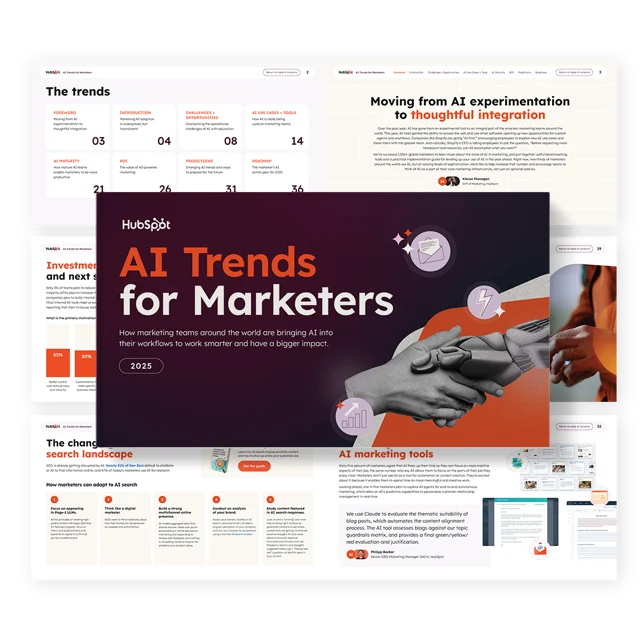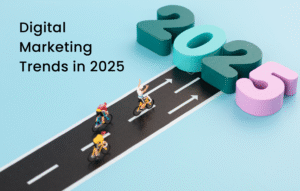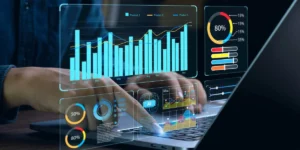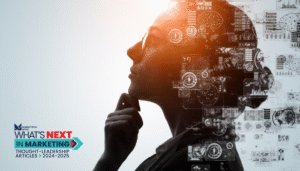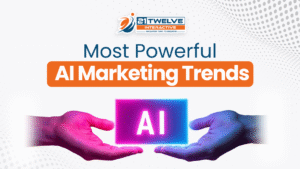AI Marketing Trends: How Artificial Intelligence is Shaping the Future of Digital Marketing in 2025 and Beyond
Artificial Intelligence (AI) has shifted from being a futuristic buzzword to becoming an everyday marketing powerhouse. What once seemed like science fiction — hyper-personalized ads, predictive customer behavior, AI-written campaigns — is now a daily reality for brands.
As we step deeper into 2025, AI in marketing isn’t just a tool; it’s the driving force behind customer engagement, campaign optimization, and revenue growth. Businesses that ignore AI risk falling behind competitors who are leveraging it to automate, predict, and personalize at unprecedented scales.
This article explores the latest AI marketing trends transforming the industry, complete with examples, statistics, and actionable insights for brands ready to ride the AI wave.
1. Hyper-Personalization at Scale
What It Means
Hyper-personalization uses real-time customer data and AI algorithms to deliver messages, offers, and experiences uniquely tailored to each individual.
Unlike traditional segmentation (grouping customers into broad categories), hyper-personalization uses:
-
Behavioral data (click history, purchase history)
-
Demographic info
-
Contextual signals (time, location, device)
-
Emotional tone analysis from interactions
Example
-
Netflix’s recommendation engine curates unique content feeds for over 250 million users, increasing watch time.
-
Amazon personalizes product suggestions in real time, driving 35% of its revenue.
Why It’s a Trend
With AI, brands can scale personalization to millions of customers simultaneously, improving engagement rates and boosting loyalty.
2. AI-Powered Content Creation
What It Means
Generative AI tools can now create:
-
Blog posts
-
Ad copy
-
Product descriptions
-
Social media content
-
Video scripts
Platforms like ChatGPT, Jasper AI, and Copy.ai produce copy in seconds, freeing marketers from repetitive writing.
Emerging Trend
-
AI Video Generation – Tools like Synthesia and Runway ML create human-like video presenters and animations without a camera crew.
-
AI Voiceovers – Natural-sounding AI-generated voices replace traditional recording.
Impact
AI reduces production time and costs while enabling rapid A/B testing of creative variations.
3. Predictive Analytics for Campaign Optimization
What It Means
Predictive analytics uses AI to forecast future customer behavior based on historical data.
Applications
-
Identifying customers likely to churn
-
Predicting purchase intent
-
Anticipating market trends
-
Optimizing ad spend
Example
Coca-Cola uses AI to predict consumer demand, adjusting campaigns in real time to maximize ROI.
4. Conversational AI and Chatbots
What It Means
Conversational AI is replacing static FAQs and customer service forms with natural, human-like interactions.
Advancements
-
Chatbots now understand context and sentiment
-
Seamless handoff to human agents when needed
-
Integration with voice assistants like Alexa and Google Assistant
Why It Matters
A 2024 Statista report found that 80% of customers expect instant responses — AI chatbots deliver 24/7 service while reducing operational costs.
5. AI-Driven SEO Optimization
What It Means
AI tools like Surfer SEO, Clearscope, and MarketMuse analyze top-ranking content, identify gaps, and suggest keyword strategies.
Emerging Use Cases
-
Search Intent Analysis – Understanding why a user searches, not just what they search.
-
Automated Internal Linking – Tools that map link structures for better crawlability.
-
Voice Search Optimization – Adapting content for AI-powered assistants.
6. Emotional AI in Marketing
What It Means
Also called affective computing, Emotional AI reads customer emotions via:
-
Facial expressions
-
Voice tone
-
Text sentiment
Example
-
Retailers like H&M test in-store AI kiosks that adjust recommendations based on a shopper’s mood.
-
Call centers use emotional AI to detect customer frustration and alert supervisors.
7. AI-Powered Visual Search
What It Means
Instead of typing keywords, customers use images to find products.
Example
-
Pinterest Lens allows users to take a picture and instantly find similar products.
-
IKEA’s app lets customers upload a photo of a room to get furniture recommendations.
Why It’s Growing
Visual search is perfect for e-commerce, where customers often “shop with their eyes.”
8. Voice Search and Conversational Commerce
What It Means
AI voice assistants like Alexa, Siri, and Google Assistant are enabling hands-free shopping.
Trends
-
Voice commerce is expected to reach $45 billion globally by 2025.
-
Brands are optimizing content for conversational queries.
9. Automated Media Buying
What It Means
AI algorithms automatically purchase and optimize ad placements in real time.
Benefits
-
Eliminates manual bidding guesswork
-
Maximizes ROI by adjusting in milliseconds
-
Works across Google, Facebook, TikTok, and programmatic ad platforms
10. Deepfake Marketing (Ethical Use)
What It Means
AI-generated synthetic media can bring historical figures, celebrities, or brand mascots to life.
Example
-
Brands use deepfake tech for personalized video messages.
-
Ethical considerations include transparency and consent.
11. AI for Dynamic Pricing
What It Means
Prices change in real time based on:
-
Demand
-
Competitor pricing
-
Customer behavior
Example
Airlines and ride-sharing apps like Uber use AI-driven pricing models daily.
12. AI in Influencer Marketing
What It Means
AI tools can:
-
Find influencers whose audience matches brand goals
-
Predict campaign performance
-
Detect fake followers
Trend
Virtual influencers (AI-generated characters) are gaining popularity — they never age, get tired, or cause scandals.
13. Privacy-First AI Marketing
With privacy laws like GDPR and CCPA, marketers are turning to AI-powered anonymized targeting.
-
Zero-party data collection (data willingly shared by customers)
-
AI models that don’t store raw personal data
14. AI-Generated Customer Journeys
AI maps and predicts customer paths, helping marketers design:
-
Personalized onboarding
-
Relevant upsell opportunities
-
Timely re-engagement campaigns
15. Sustainability-Driven Marketing with AI
AI helps brands market sustainability efforts:
-
Optimizing supply chains for lower emissions
-
Creating eco-friendly messaging
-
Personalizing green product recommendations
16. Real-Time Sentiment Tracking
Brands now monitor public sentiment live during:
-
Product launches
-
Social campaigns
-
Crisis management
Example: AI tools alerted brands to potential PR crises within minutes during 2024’s viral social media backlash trends.
17. AI in Augmented and Virtual Reality Marketing
AI powers personalized AR filters and virtual try-ons:
-
L’Oréal lets customers test makeup in AR
-
IKEA’s Place app visualizes furniture in real rooms
18. AI for Cross-Channel Consistency
AI ensures messaging, tone, and branding are uniform across email, social, ads, and websites, even when automated.
19. Multilingual AI Marketing
AI can translate and adapt campaigns to local cultures in real time, enabling global reach without losing personalization.
20. Autonomous Campaigns
Fully AI-managed campaigns that:
-
Create content
-
Allocate budgets
-
Adjust creatives
-
Optimize continuously without human intervention
Key Takeaways for Marketers in 2025
-
Adopt AI Early – Waiting means falling behind.
-
Balance Automation with Creativity – AI handles efficiency; humans drive emotional connection.
-
Prioritize Ethics – Transparency in AI use builds trust.
-
Invest in Data Quality – AI is only as good as the data it learns from.
The Future of AI Marketing
By 2030, AI may handle 80% of routine marketing tasks. Marketers will shift to strategic roles — focusing on creativity, ethics, and innovation while AI handles execution.
Brands that embrace AI now will not only gain a competitive edge but will also shape the marketing landscape for the next decade.
https://bitsofall.com/explainable-ai-xai-making-artificial-intelligence-transparent/
Democratization of AI: How Artificial Intelligence is Becoming Accessible to All

